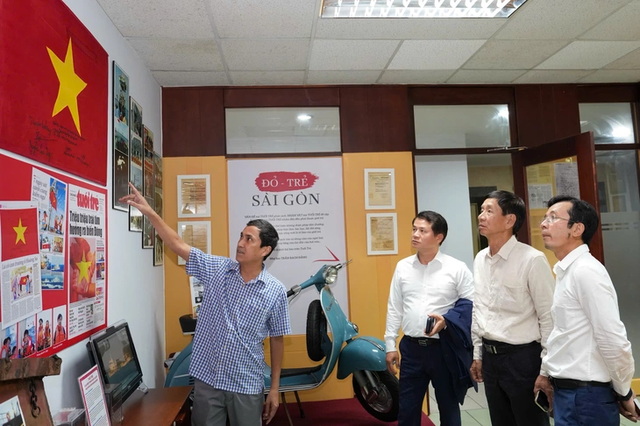
Ta Duc Minh (R, 2nd), trade counselor of the Vietnam Trade Office in Japan, expressed his impression of the credibility and quality of the information that Tuoi Tre (Youth) newspaper provides to readers both in Vietnam and abroad. Photo: Huu Hanh / Tuoi Tre
"They asked about the ripeness of the lychees and when they can be shipped [to Japan],” Minh added.
"This year, we hope to boost lychee exports to Japan.
"We will strive to coordinate with all parties to introduce the fruit as early as possible."
According to Minh, Japan is a key but highly demanding export market.
Vietnamese businesses not only need to ensure consistent quality but also adapt packaging to suit Japanese consumer preferences.
Bilateral trade between Vietnam and Japan has continued to grow positively in the first five months of 2025, thanks to stable political relations and mutual trust, especially the strong bond between the peoples of the two countries.
Vietnam’s major exports to Japan, including agro-fishery-forestry products and wood items, have all recorded positive results in the early months of the year.
However, Minh noted that each commodity has its own characteristics that affect the stability of exports.
"Wood products are usually made to order, with specific size standards and little fluctuation. Meanwhile, agricultural and aquatic products depend heavily on seasonal and weather factors," Minh explained.

Ta Duc Minh, trade counselor of the Vietnam Trade Office in Japan, shares information about trade between Vietnam and Japan. Photo: Huu Hanh / Tuoi Tre
He cited the case of lychees, which are favored in Japan but faced difficulties last year due to low yields and high prices, limiting export volumes and reducing competitiveness.
However, he expressed optimism that the situation would improve this year, as there have already been many positive signals in demand, with many Japanese businesses proactively contacting the trade office to exchange information and prepare early import plans to serve Japanese consumers.
Long-term strategy needed
In addition to lychees, Minh hopes that Vietnamese pomelos, not just green-skinned pomelos, will have opportunities to expand their market share in Japan.
Japanese consumers generally favor tropical fruits with distinctive flavors, such as the Cat Chu mango, which is already available in Japanese supermarkets.
However, he emphasized that beyond fresh fruit, Vietnamese businesses need to promote value-added processed products, such as dried or soft-dried mangos, to meet year-round consumption demand and further deepen market penetration.
In Japan, advanced cold preservation technology allows fruits to maintain freshness for six to nine months after harvest.
The question is whether such technology can be applied in Vietnam, especially as fruits often ripen all at once during their seasons.
Although this technology requires significant investment and is not yet widespread in Vietnam, Minh believes that shifting the mindset of farmers and businesses from seasonal farming to post-harvest logistics investment is crucial for greater progress.

Ta Duc Minh, trade counselor of the Vietnam Trade Office in Japan, visits Tuoi Tre newspaper’s legacy room. Photo: Huu Hanh / Tuoi Tre
To serve more than 500,000 Vietnamese people living in Japan and to reach a demanding market of over 120 million, Minh recommended that Vietnamese businesses invest more in quality, branding, and post-harvest technology.
With improved quality and technology, Vietnamese agricultural products can sustainably thrive in highly demanding markets like Japan.
Vietnam is entering the peak lychee harvest period.
According to the Plant Production and Protection Department, the total output is estimated at over 303,000 metric tons, up about 30 percent compared to last year.
The harvest season is divided into two phases: from May 20 to June 10 and from June 10 to July 25.
To date, 469 growing areas with a total area of nearly 19,400 hectares and 55 packing facilities have been licensed for export to markets such as Japan, the United States, and Australia.
All growing areas and packing facilities have completed registration and are under regular supervision, ready to serve exports this year.


Max: 1500 characters
There are no comments yet. Be the first to comment.